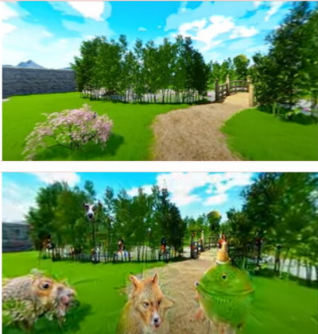Researchers at the Università Cattolica del Sacro Cuore in Milan have developed an immersive virtual reality experience that simulates the visual hallucinations typically induced by psychedelic substances, without the actual use of any drugs. This innovative approach is detailed in a study titled Cyberdelics, published in the journal Dialogues in Clinical Neuroscience on October 9, 2025. The study was led by Professor Giuseppe Riva, director of the Humane Technology Lab, alongside researchers Dr. Giulia Brizzi and Dr. Chiara Pupillo.
The aim of this experimental study was to examine the psychological effects of simulated visual hallucinations on cognitive and emotional functioning. Initial findings suggest that these virtual experiences significantly influence various cognitive processes, enhancing creativity and cognitive flexibility, with effects that could rival those of psychedelic drugs.
Implications of the Study
“We have demonstrated for the first time that virtual reality can replicate some of the positive effects associated with the use of psychotropic substances,” stated Professor Riva. He noted that while the increase in cognitive flexibility and creativity is particularly noteworthy, further research is necessary to determine whether these effects mirror the neurobiological changes brought about by substances like psilocybin or LSD.
Currently, the use of psychedelics in clinical settings remains limited, as these substances are not legally approved for routine therapeutic use in many countries. Nonetheless, in regions such as the United States and Switzerland, authorized clinics are employing them within structured treatment protocols for patients suffering from conditions like treatment-resistant depression and post-traumatic stress disorder. In Italy, a significant development occurred in August 2025, when the Italian Medicines Agency (AIFA) approved the first clinical trial using psilocybin for resistant depression.
In this context, the Cyberdelics project presents a digital and non-pharmacological alternative that harnesses the benefits of psychoactive hallucinogens while minimizing the risks associated with their consumption.
Research Methodology
The environments created for the Cyberdelics study employed advanced visualization techniques powered by artificial intelligence. Researchers transformed a relaxation video from the company Become using Google’s DeepDream algorithm, resulting in an immersive experience rich with hallucinatory visual effects. A total of 50 healthy volunteers participated in two ten-minute virtual reality experiences: “The Secret Garden” and its hallucinatory counterpart.
The study aimed to measure changes in cognitive and psychophysical states following exposure to the hallucinatory version compared to a control video. Results indicated that the hallucinatory experience prompted notable cognitive changes shortly after the participants engaged with the content.
Despite being a safer alternative to psychedelics, virtual reality is not without its risks. Some individuals may experience cybersickness or motion sickness, which can manifest as nausea, visual fatigue, or disorientation. Experts emphasize the importance of conducting these experiences within controlled environments, adhering to ethical guidelines, and under the supervision of trained facilitators or therapists.
Future Directions
The findings from this study open up promising avenues for clinical research. Cyberdelics could serve as an integrative tool in therapeutic practices, acting as a bridge between traditional psychotherapy and emerging psychiatric methodologies. Future research will focus on controlled clinical trials involving patients with various psychological conditions, utilizing physiological and neurobiological measures to better understand the underlying mechanisms, effects, and their duration.
“Our goal is not to replace traditional drugs,” the researchers concluded. “Instead, we aim to utilize virtual reality and technology to create a safe laboratory for exploring altered states of consciousness and their therapeutic potential. This approach offers a digital alternative for individuals seeking the benefits of psychedelic experiences without resorting to recreational substances, especially for those who do not respond effectively to conventional treatments.”
As the field of cyberdelics evolves, it may play an essential role in the future of mental health treatment, providing innovative pathways for therapeutic intervention.
